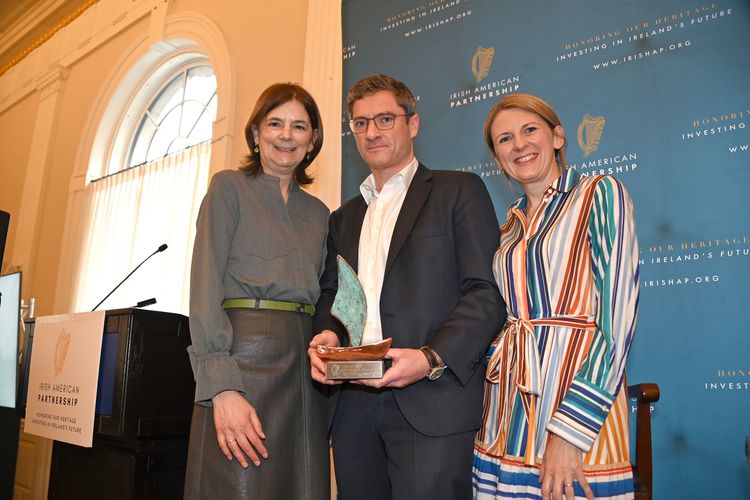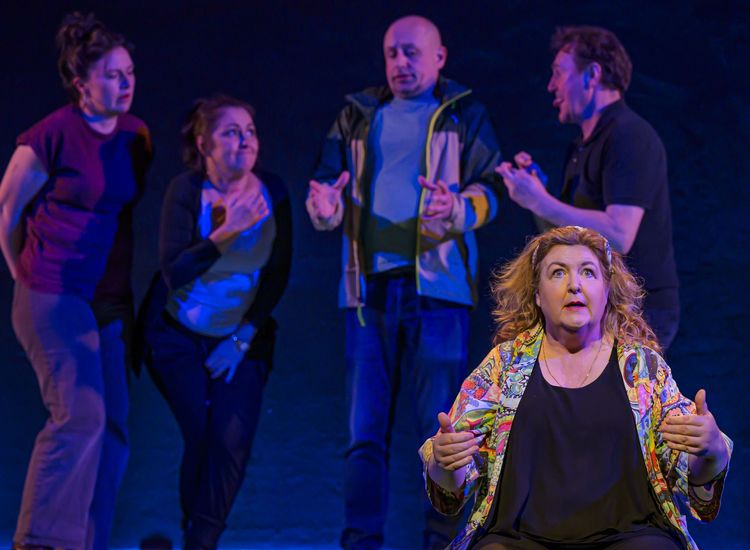PHOTO BY MARGARET M. JOHNSON
Ireland Hopping | By Margaret M. Johnson
In late 1759, Kildare-born Arthur Guinness decided to "try his luck in Dublin," where he took a 9,000-year lease on a small brewery at St. James's Gate. After first brewing ale, Guinness found that he would have to compete with a new drink popular with the porters at Covent Garden that was being exported to Dublin by London brewers. Tackling the English at their own game, Guinness tried his hand at the new "porter" and established a tradition that is, perhaps, unsurpassed in brewing history. The characteristic dark color of porter, which is made with top-fermenting yeast, is the result of using roasted barley in addition to hops and water. This rich taste in a drink translates beautifully to cooking and baking, so if you’re looking for Guinness-inspired dishes to serve this weekend, look no further than these two recipes for a main course cobbler and delicious dessert. Happy St. Patrick’s Day/Beannachtaí na Féile Pádraig!

KERRYGOLD
BEEF IN GUINNESS WITH CHEESE COBBLER
SERVES 6 TO 8
This beef casserole is a variation of the traditional beef dish made with Guinness, and it comes with a cobbler topping made with Dubliner cheese. The casserole can be prepared in advance and left at room temperature with the cobbler added just before baking. The recipe was first published in my cookbook “Cooking with Irish Spirits” and reappears in “Favorite Flavors of Ireland”: signed copies are available from www.irishcook.com
For the casserole
2 tablespoons all-purpose flour
Salt and freshly ground black pepper, to taste
1 1/2 pounds beef chuck or round, cut into cubes
2 tablespoons olive oil
1 medium onion, diced
1 garlic clove, minced
2 carrots, peeled and diced
3 stalks celery, diced
1 bottle (12 ounces) Guinness
2 cups homemade beef stock or canned low-sodium beef broth
1 tablespoon tomato paste
1 tablespoon Worcestershire sauce
1 sprig fresh thyme
For the cobbler
2 cups self-rising flour
1/2 teaspoon dry mustard
Salt and freshly ground black pepper, to taste
3 tablespoons unsalted Kerrygold Irish butter
1 cup shredded Dubliner cheese
1/2 teaspoon Tabasco sauce
1/2-2/3 cups water
1 tablespoon milk, for brushing tops
- Make casserole. In a large re-sealable plastic bag, combine flour, salt, and pepper. Dredge beef in flour mixture; set aside.
- In a large ovenproof skillet or 12-inch braising pan, heat oil over medium heat. Add onion and garlic and cook for 2 to 3 minutes, or until soft but not browned. Add beef and cook for 3 to 5 minutes, or until browned on all sides; add carrots and celery and stir to coat.
- Stir in Guinness, stock or broth, tomato purée, Worcestershire sauce, and thyme. Bring to a boil, and then reduce heat to low, cover, and simmer for 30 minutes. Uncover and cook for 15 to 20 minutes longer, or until meat and vegetables are tender and sauce starts to thicken; remove from heat.
- Make cobbler. Preheat the oven to 350º F. Sift flour and mustard into a food processor; season with salt and pepper. Add butter, and pulse 4 to 5 times, or until mixture resembles coarse crumbs. Add cheese, Tabasco, and 1/2 cup of water. Process for 8 to 10 seconds, or until soft dough forms. (Add more water, if necessary).
- Transfer dough to a floured surface and roll out to 1/2-inch-thick round. With a 3-inch cookie cutter, cut out 7 to 8 rounds; reroll and cut out more rounds to make 12.
Arrange on top of casserole, overlapping in a decorative pattern; brush tops with milk.
- Bake for 30 to 35 minutes, or until cobbler is golden and mixture is bubbling. Remove from oven and serve immediately.

JOHNNY VALIANT/COOKING LIGHT MAGAZINE
BLACK AND TAN BROWNIES
MAKE 2 DOZEN
Brownies, first unveiled at the Women’s Pavilion of the 1893 World Columbian Exposition in Chicago, seem to have universal appeal as a “neither-cake-nor-pastry dessert.” This recipe was inspired by one from Grace Neill’s Pub in Donaghadee, County Down, reputed to be the oldest pub in all of Ireland. It was created there to mimic the famous Irish pub drink made with a light ale on the bottom of a glass and topped with a dark layer of Guinness. The recipe for these brownies first appeared in The Irish Pub Cookbook and are perfect for a St. Patrick’s Day party.
For the tan layer
6 tablespoons unsalted Kerrygold Irish butter, at room temperature
1 1/2 cups (packed) light brown sugar
2 large eggs
1 teaspoon vanilla extract
1 cup all-purpose flour
1 teaspoon baking powder
1/4 teaspoon salt
1 cup chopped pecans
For the black layer
3 ounces unsweetened chocolate, roughly chopped
4 tablespoons unsalted Kerrygold Irish butter
1 cup granulated sugar
2 large eggs
1 teaspoon vanilla extract
1 cup Guinness stout
1 cup all-purpose flour
1/4 teaspoon salt
- Make tan layer. Preheat oven to 350° F. Grease a 9-inch baking pan.
- In a medium bowl, beat butter and sugar with an electric mixer on medium speed until light and fluffy; beat in eggs and vanilla. With a wooden spoon, stir in flour, baking powder, salt, and pecans.
- Transfer to prepared pan and spread batter evenly with a rubber spatula or with dampened fingers. Bake for 20 minutes and then remove from oven.
- Make black layer. Microwave chocolate and butter in a large glass bowl on HIGH for 1 minute. Stir once, and then return to microwave for 30-second intervals, stirring in between, until chocolate is melted and smooth. Stir in sugar until well combined; let cool for about 5 minutes.
- Stir in eggs, vanilla, and Guinness until smooth; add flour and salt and stir to combine. Slowly pour over partially baked tan layer.
- Bake for 25 minutes, or until a skewer inserted into center comes out almost clean. Remove from oven and let cool completely on a wire rack before cutting into squares.
Margaret Johnson’s “Recipes” page now includes “Ireland Hopping: Adventures in Food, Drink, and Travel.” For further details on her work, including how to order her cookbooks, visit www.irishcook.com











